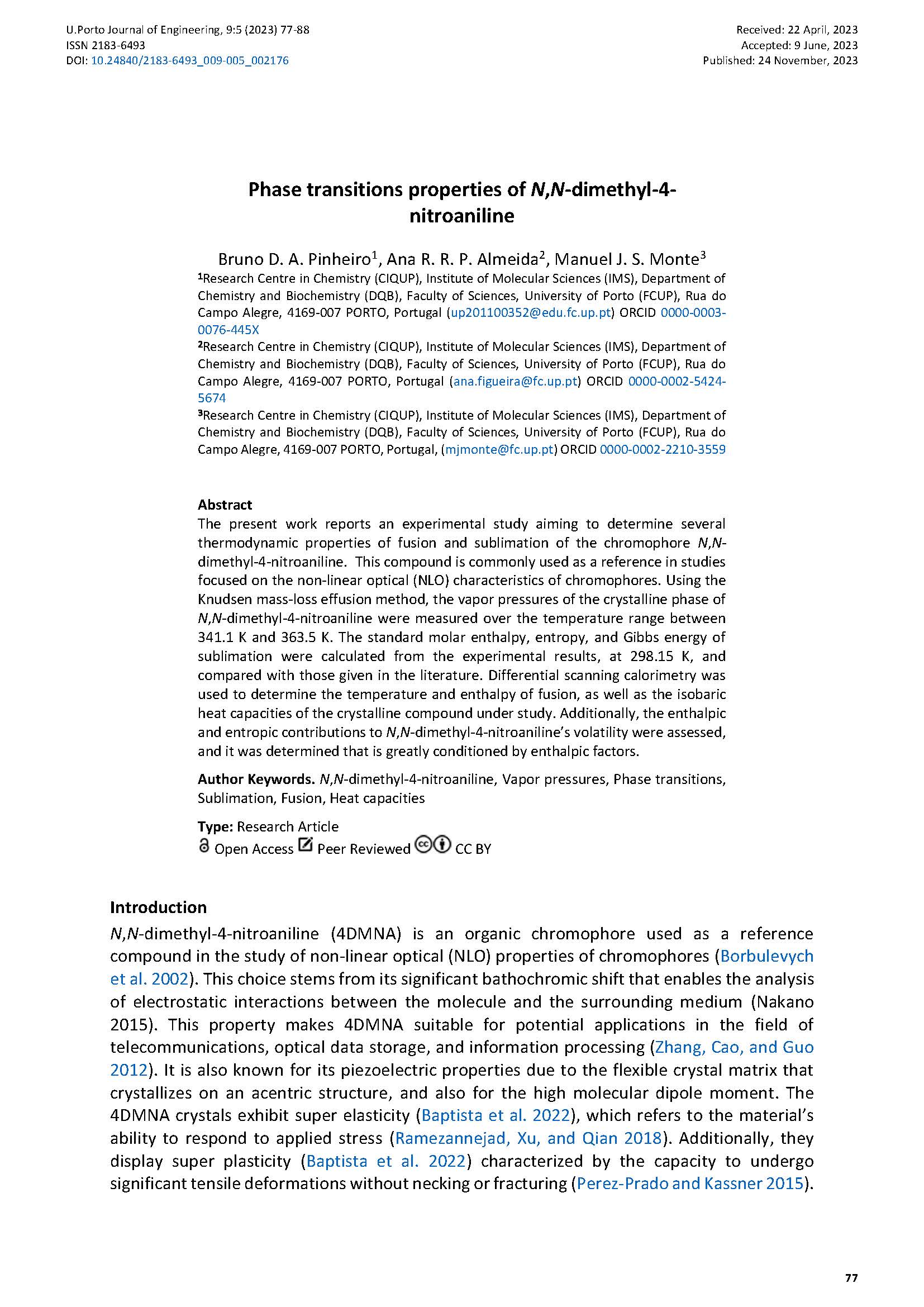Phase transitions properties of N,N-dimethyl-4-nitroaniline
Main Article Content
Abstract
The present work reports an experimental study aiming to determine several thermodynamic properties of fusion and sublimation of the chromophore N,N-dimethyl-4-nitroaniline. This compound is commonly used as a reference in studies focused on the non-linear optical (NLO) characteristics of chromophores. Using the Knudsen mass-loss effusion method, the vapor pressures of the crystalline phase of N,N-dimethyl-4-nitroaniline were measured over the temperature range between 341.1 K and 363.5 K. The standard molar enthalpy, entropy, and Gibbs energy of sublimation were calculated from the experimental results, at 298.15 K, and compared with those given in the literature. Differential scanning calorimetry was used to determine the temperature and enthalpy of fusion, as well as the isobaric heat capacities of the crystalline compound under study. Additionally, the enthalpic and entropic contributions to N,N-dimethyl-4-nitroaniline’s volatility were assessed, and it was determined that is greatly conditioned by enthalpic factors.
Downloads
Article Details

This work is licensed under a Creative Commons Attribution 4.0 International License.
Authors who publish with this journal agree to the following terms:
- Authors retain copyright and grant the journal right of first publication with the work simultaneously licensed under a Creative Commons Attribution License that allows others to share the work with an acknowledgement of the work's authorship and initial publication in this journal.
- Authors grant the journal the rights to provide the article in all forms and media so the article can be used on the latest technology even after publication and ensure its long-term preservation.
- Authors are able to enter into separate, additional contractual arrangements for the non-exclusive distribution of the journal's published version of the work (e.g., post it to an institutional repository or publish it in a book), with an acknowledgement of its initial publication in this journal.
- Authors are permitted and encouraged to post their work online (e.g., in institutional repositories or on their website) prior to and during the submission process, as it can lead to productive exchanges, as well as earlier and greater citation of published work (See The Effect of Open Access).

